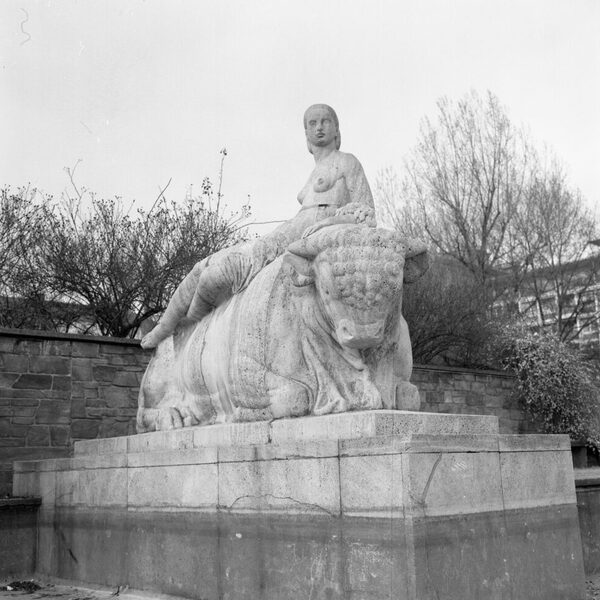Europe on the bull
The focal point of the Reisinger and Herbert grounds in front of the main railway station is the monumental sculpture of Europa on the bull. The 150-tonne colossus made of shell limestone was created in 1937 by the Stuttgart sculptor Joseph Ludwig Spiegel (1885-1957) and is located at the end of a slab path that runs along the edge of a large basin.
The Greek myth of Zeus, the father of the gods, who falls in love with the king's daughter Europa, appears to her in the form of a bull and, when she is tempted to sit on his back, carries her off to Crete, is also taken up again in the nearby Wandelhalle in a mural by Karl Otto Hy based on a design by Arnold Hensler and explained on a plaque. Spiegel was commissioned to erect a war memorial in Rüsselsheim in 1930 and presumably came into contact with Wiesbaden and the clients of the Reisinger and Herbert facilities through Wilhelm von Opel.
The monument with Europa gracefully positioned on the mighty body of the bull has lost none of its appeal even today. The ancient theme of the virgin Europa, stolen by Zeus in the form of a bull, enjoyed great popularity in the 1930s and 1940s. In the Wiesbaden context, Europa was intended as a symbol of the cosmopolitanism of the spa town.
Literature
Sigrid Russ, editor, Denkmaltopographie Bundesrepublik Deutschland. Cultural monuments in Hesse. Wiesbaden I.2 - City extensions within the ring road. Ed.: State Office for Monument Preservation Hesse, Stuttgart 2005 [p. 118 f.].
